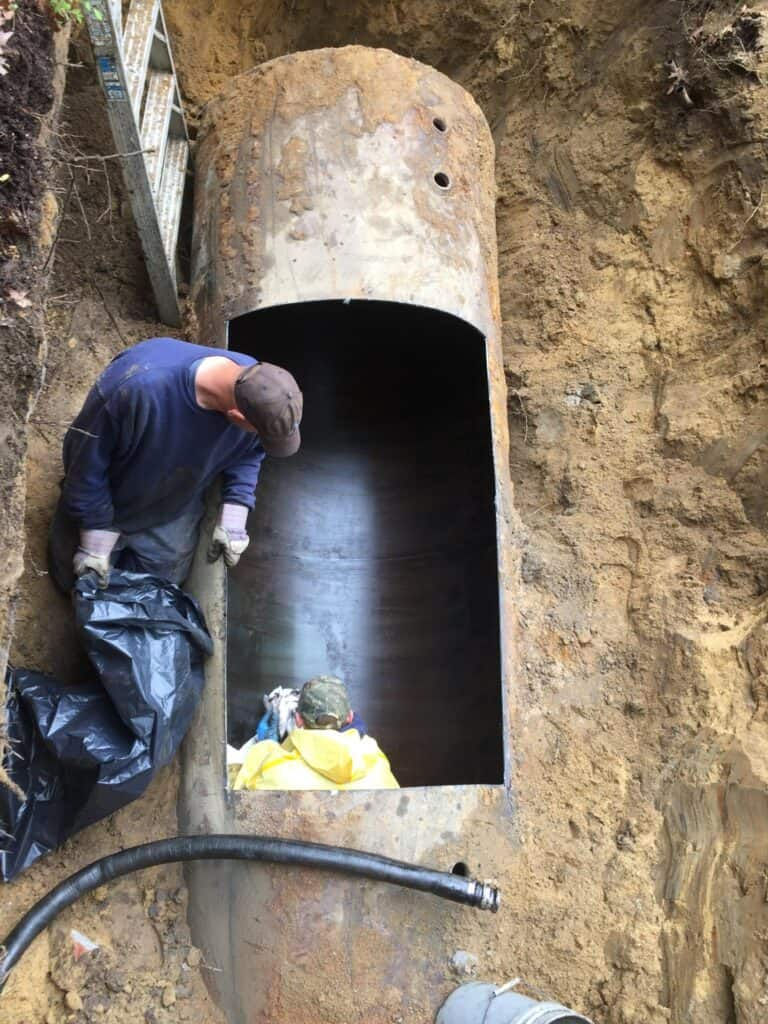Why Remove and Replace an Underground Storage Tank?
- mintchipmedia
- Mar 27, 2024
- 3 min read
Two common storage tank types found at private properties are Underground Storage Tanks (UST) and Aboveground Storage Tanks (AST). Storage tanks are essentially large containers that hold fuel (usually heating oil) for properties. This article will focus on Underground Storage Tanks; we will refer to these as USTs. USTs have slowly been phased out since 1988 when the EPA introduced new federal regulations regarding USTs.
Why are USTs problematic?
At a minimum, USTs are a liability for the property owner and can ultimately result in environmental disasters. As of September 2020, there have been 559,900 confirmed spills involving USTs in the United States since record-keeping began in the 1980s. Until federal regulations began, most USTs were made of bare steel, which is likely to corrode and cause leaks over time. While USTs are no longer made from these materials, thousands of USTs are still installed from previous years made out of improper materials; and the USTs made after regulation still suffer from significant complications. These leaks from UST corrosion can threaten human and environmental safety. The hazardous materials the USTs hold can leak into the soil and then eventually into the groundwater. About 1/3 of Americans rely on groundwater as their water source – groundwater pollution is a serious problem with dangerous consequences.

UST Being Removed From Ground
Prevention
As government and regulation agencies move into the future, most responsible oil tank installation companies will not install new USTs. There are minimal circumstances when the property owner has no other option other than to install a UST. We at Eastern Environmental always encourage customers to install Aboveground Tanks whenever possible and avoid installing new USTs at all costs. If you currently have a UST installed on your property, there are a few precautions you can take to ensure your UST is maintained properly and the community and environment remain protected:
Keep an eye out for oil or other shiny liquids leaking from around the tank.
Pay attention to if you smell vapors around your tank or in your basement.
Ensure pumps and other equipment attached to the tank are working properly.
Have a professionally licensed and insured company, run intermittent leak monitoring assessments to ensure your tank maintains its integrity.
What can I do if I have a UST and want to remove it?
Eastern Environmental Solutions has decades of experience in UST removal and abandonment. When a customer calls Eastern, we offer a few options to mitigate any environmental issues when removing a UST. The first option is simple – completely remove the tank. To do this, first, our technicians excavate down to the tank. Once our technicians have reached the tank, we carefully cut into the tank, as shown below.

UST Cut into for cleaning
After our technicians have cut into the tank, they dress into their hazmat suits, clean the tank, and remove hazardous materials with a Vac Truck or similar tool. Once the tank has been properly cleaned, we can safely lift the tank out of the ground and transport it to disposal facilities. The other common option used to mitigate USTs is called ‘abandonment.’ UST abandonment refers to the process of cutting the top off of the UST, carefully cleaning it of any hazardous materials, and then filling the UST with a non-hazardous material such as sand or foam. During a UST abandonment, the tank is never actually removed from the ground but is instead safely ‘abandoned’ to prevent future environmental hazards. After the UST is filled with sand or foam, it is then completely covered with earth, and the site is fully restored. Below is a photo to visualize the process of abandonment:

UST being abandoned and filled with sand
After a successful abandonment, Eastern Environmental Solutions usually installs a new high-quality Aboveground Storage tank (AST) to replace the UST. Eastern then helps the client get all the governmental and regulatory paperwork necessary to prove the UST has been properly mitigated. Below is a photo from a clients property where Eastern replaced a UST, fully restored the earth, and then installed a brand new quality Roth AST:

Outdoor Residential Roth AST





Comments